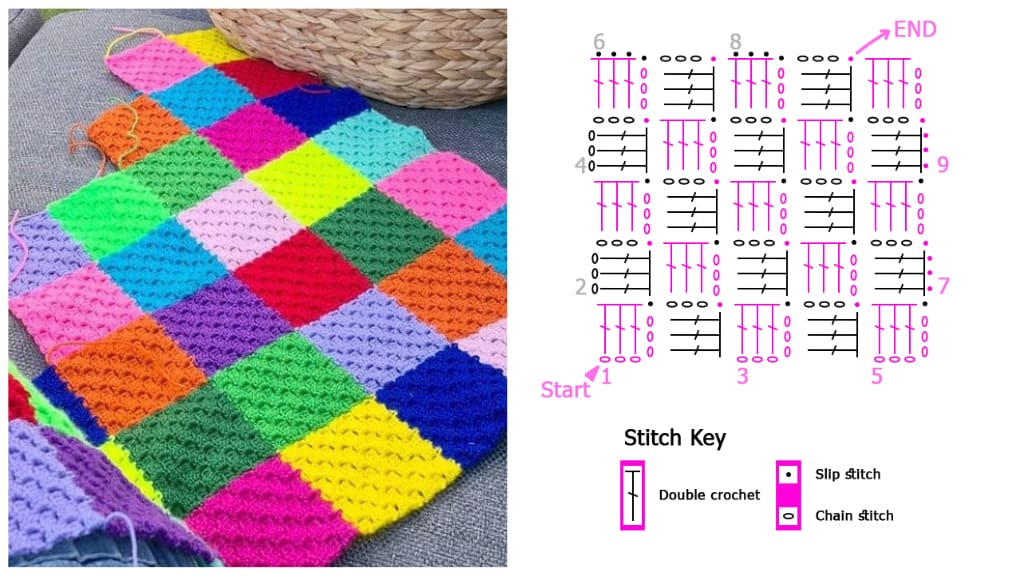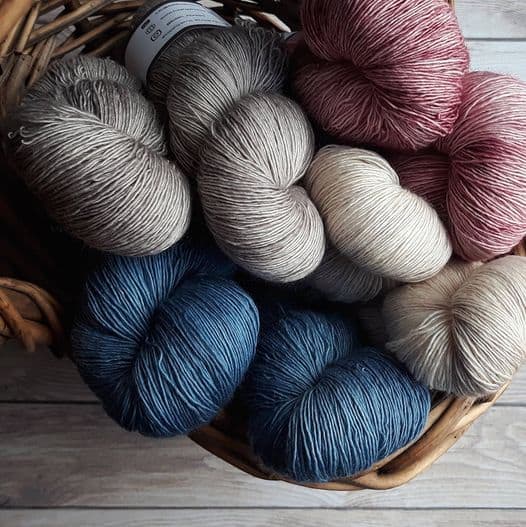

Crochet hook selection for any crochet project depends upon several factors: yarn type, yarn weight and pattern gauge, personal comfort, and special techniques. Let’s look at each of these factors and help you make choices that contribute to a successful project. Here we share tips for exact crochet hook selection.
Yarn Type
To achieve a smooth flow of stitches in crochet, the loops need to glide easily over the hook. Textured yarns may tend to get hung up on the shaft of the hook, especially if you make tight stitches. A polished aluminum or steel hook or a hook with a teflon coating (usually gray in color) can glide more easily through nubby or fuzzy yarns such as boucle or mohair.
On the other hand, you may prefer a plastic or wooden hook for most other yarns. Use your favorite type of hook, changing only if you feel your work is not flowing as smoothly as it could.,
Different brands of crochet hooks also vary slightly in the shape of the hook end. Consider whether a more pointed or rounded tip works better with your yarn.
Yarn Weight and Pattern Gauge
Hook size must be matched to yarn size, unless you are looking for a special effect. Thin crochet thread worked with a jumbo hook would look stringy, while a tiny steel hook could not reach around knitting worsted or chunky yarn.
For tiny stitches in cotton thread, steel hooks are used for their superior strength even in the smallest sizes. Small, rigid hooks are also used for tapestry crochet and amigurumi, which require small and tight stitches. A rigid steel hook is good for reaching into the tiny stitches without splitting the plies of the yarn. Steel hooks also have tips with more of a point, for easily finding the openings in tiny loops.
For standard yarns from sport weight to worsted, aluminum is most commonly used for its combination of light weight and strength. Aluminum hooks are widely available in a large range of sizes. Plastic, bamboo, and wood are also used for crochet hooks. Experiment to see what type of hook you like best with the most common yarn weights.
Jumbo hooks, usually made of plastic or luxite, are used for bulky yarns or for crocheting with heavy cord or with fabric strips. There are also jumbo hooks made of wood, but you might find them a bit heavy in your hand.
Personal Comfort
If you have arthritis or you crochet for long periods of time, crochet hook selection is even more important for you. Bamboo or wooden hooks feel warmer against the hands than steel or aluminum. They are also less rigid, allowing for some additional flexibility in the hand’s motion.
The shaft of the crochet hook can also be shaped for better fit against the hand. These ergonomic hooks have a curved and shaped shaft to conform to the natural contours of the hand. Alternatively, try a hook with a cushioned grip. The cushion better distributes tension over the entire hand rather than at a few points of stress on the fingers. These hooks can allow you to work longer with less discomfort afterwards.
You may also purchase cushion grips that fit over standard crochet hooks. They make your old hooks more comfortable so you don’t need to replace them. Another helpful option is a supportive compression glove for your working hand.
If your eyesight is not perfect, the color of your hook can be important. Be sure there is contrast between your yarn and your hook. A dark hook against dark yarn is a recipe for eye strain and a headache!
Special Techniques
There are some hooks and other tools that are used for specific techniques or special considerations. The first of these is the Tunisian crochet hook, also called an afghan hook. These hooks have a longer shaft, like a knitting needle. Tunisian crochet involves collecting loops in a row on the hook, then working the loops off to create stitches that mimic knitting. For extra-wide work, there are Tunisian hooks that have a long, flexible cable with a stopper at the end to hold many stitches at once.
Broomstick lace is an interesting technique that creates large, lacy stitches. A chain is crocheted with a standard hook, then loops are drawn up as in Tunisian crochet. Instead of holding the loops on a long hook, however, the loops are placed on a jumbo knitting needle before they are worked off with the standard crochet hook to complete the row.
A hairpin lace loom is a simple frame used to form large loops while the crochet hook forms a row of stitches down the center of the loom. Long strips of lace are created which can then be joined with a variety of crochet stitches. The hairpin lace loom is sometimes called a crochet fork. Some looms are adjustable to allow creation of various lace widths.
A daisy loom is a round loom that is wrapped in a pattern to form the flower petals. The center of the flower is then stitched or crocheted to secure the loops. The “daisies” are then crocheted together to make items such as afghans and pillows.
In Conclusion
Hook choices are personal, as every fiber artist has a unique grip and tension. In addition to the important considerations above, you may also indulge in some artistic fun. Crochet hooks come in some lovely colors and exotic materials. For example, there are ebony hooks made from wood reclaimed after musical instruments are made.
Finally, be sure to store your hooks in a box, case, or other container for easy retrieval. Organizing them by size makes it simple to start a new project!




